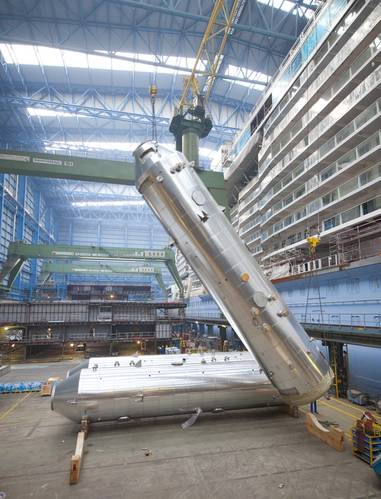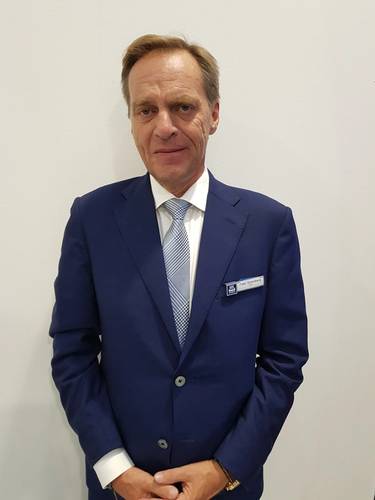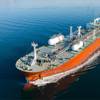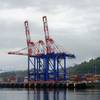Yara Marine Has Big Expectations for 2019
Many shipowners are scrambling to comply with the tough, new the International Maritime Organization (IMO) fuel global sulfur limit of 0.50 percent m/m, which takes effect January 1, 2020.
It is expected that after the rules swing into force, the light-heavy fuel price spread will likely spike and refining margins will be higher, particularly for complex refineries.
Shipowners have to stay ahead of the game, said Yara Marine Technologies CEO Peter Strandberg: “Shipowners often get a bad rap of refusing to adopt new, innovative technologies and processes. Often that’s due to valid cash concerns, especially in critical low-market cycles, but staying ahead of the game makes good business sense and these upcoming IMO regulations require it.”
Yara Marine Technologies, a manufacturer of exhaust gas emissions control solutions, or scrubbers, has consulted hundreds of shipowners during the past 36 months, landing between 200 and 300 scrubber deliveries – a number which will more than double in the coming years.
There are currently more than 1,320 ships with confirmed scrubber projects, reports DNV GL in its Overview of Scrubber Installations released September 7 this year.
“Sales are up significantly in 2018, with anticipated revenue of NOK 700 million, and we expect this growth to continue in 2019,” said Strandberg, who is looking to hire another 60-80 people in addition to the current 100 employees.
Shipping companies are under pressure to utilize their capital budgets wisely and cannot overspend on the initial purchase of the marine scrubber or the operational expenditure during the lifetime of that asset. They must choose the right scrubber solution, most likely to range between €1-6 million.
Further, marine fuel is a huge bottom-line expenditure. Marine gas oil (MGO) is the highest class of marine fuel, with the lowest concentration of sulfur and particulates in the fuel, limited to less than 0.10 percent m/m. But it is expensive compared to heavy fuel oil (HFO). Scrubber technology is a low-cost alternative to low-sulfur fuel to control maritime emissions and meet MARPOL Annex VI compliance.
“The price gap between MGO and HFO is huge, currently a difference of some $300 per ton. Ships burning some 60 tons of HFO per day achieve amazing savings with our marine exhaust solutions,” Strandberg said.
“We create value for shipowners from day one, giving a return of investment in one to two years. This is what shipowners want. This is a good business.”
Yara Marine's abatement scrubber solution comes with a premium price tag, but offers high quality and a low footprint. The company reports a growing market appetite for its patented design and technology, with production is bursting at the seams and subsuppliers signing up to help meet market demand.
“Yara Marine is quality. Market demand for our inline SOx exhaust gas cleaning systems, able to operate in both open and closed loop, is huge and growing. We have increased production by several hundred percentages at all our facilities in Europe, North America and Asia,” Strandberg said.
Committed to high-end technology, material and components, Yara Marine purchases its own high-grade stainless steel and gives shipowners what it says is probably the best extended system guarantee in the world.
“I need to know where the steel is coming from. I need to see the certificate. We buy everything. This is a business of trust, not just a business of business,” Strandberg said, outlining the challenges of scrubber deterioration caused by sulfur fumes, exhaust and gases.
“High-grade steel stops corrosion. We demand the best and back our high-quality systems with a seven-year warranty against corrosion.”
Yara Marine inline scrubbers can be fitted during ship transit, thus no downtime and lost revenue. Fitting a scrubber can take as little as 10-20 days, but a detailed engineering plan and skilled workers are needed to avoid delay. There are no moving parts or bypass and system components require about the same space as the silencer they replace, simplifying installation.
“Simplicity has transformed our scrubbers in a most profound way. It has given the company a powerful competitive advantage by making a smart, user-friendly and flexible system. In shipping, complex solutions rarely work. Simple technology does,” the Yara Marine CEO said.
Yara Marine notes it is the only abatement company to offer scrubber design that allows for both magnesium oxide (MgO) and caustic soda (NaOH) as alkali in closed loop.
Supplied as a powder and easily available at low cost across the globe, MgO represents no health or safety risk compared to NaOH. In addition, scrubber consumption of MgO is one-fourth the amount of NaOH thus requiring less storage space.
Strandberg explained, “There is much lower OPEX with MgO. The product is four times more effective than NaOH, it is cheap, and lower MgO quantities result in less solid waste, hence less disposal cost. In fact, the accumulated five-year use can give savings up close to $1 million compared to that of NaOH.”
Yara Marine’s low footprint enables maximum use of cargo space, optimizing profit.
“Choosing systems that could eliminate between 50-100 container spaces is bad business. Think about losing the income of those containers for the next 20 years. That’s a lot of money,” Strandberg said.
On board vessels in cruise, container and bulk segments, Yara Marine scrubbers aggregate running time in excess of 2 million hours.
“Our systems are proven. We deliver best-in-class scrubbers, tested and measured by millions of hours. We know the scrubber’s asset lifecycle cost and provide predictive and proactive maintenance service plans,” Strandberg said.
Yara Marine has a unique position in the marine exhaust gas cleaning market as a complete abatement specialist. It is the first company in the world to successfully run a dual SOx and NOx cleaning operation. And the first marine exhaust gas cleaning company to receive an Engine International Air Pollution Prevention (EIAPP) scheme B certificate, verifying full compliance of a combined system consisting of an engine and selective catalytic reduction (SCR) technology.
“We are continuously looking for more efficient and integrated ways to assist our marine customers and the EIAPP certificate confirms the unique market position of our company and the breadth of services we can provide our customers,” Strandberg said.
See Peter Strandberg’s recent video interview with Maritime Reporter TV:
















